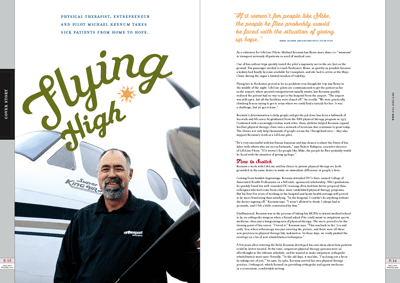We have all heard that all we need, as designers, is a basic collection of classic typefaces to get us through each and any project. (By classic I do not mean a certain style but rather the workhorse typefaces that have been around for a long time and have proved to be effective no matter their application). And maybe you do have said basic collection: Helvetica, Futura, Clarendon, Baskerville and Garamond. (Excuse me if I leave out many classics, but this is not about them). However, if this were to be (practically and technically) true, we wouldn’t have thousands of unique typefaces available would we?
There are times when indeed all you need is Helvetica for headlines and Garamond 3 for body copy. A common argument for using classic typefaces is that it lets the concept and idea stand out. Or as Experimental JetSet put it, in Emigre 65, in regards to Helvetica: “[Its] neutrality, real or imagined, enables us and the user to fully focus on the design as a whole, neutralizing the typographic layer as a way to keep the concepts clear and pure as possible.” But oftentimes a formally expressive typeface, that in itself is a major design element and part of the concept, is called for.
Adobe, ITC, Monotype, Linotype and others have a vast collection of proprietary fonts but many of them can be unexciting if you are looking for typefaces that break out of the norm. And I’m not talking at all about the grunge cacophonies of the 90s, rather about the more expressive typefaces that came once designers settled down after the digital revolution finished revolutionizing. Foundries like Emigre, Garage Fonts, T-26, P22, Thirstype and House Industries initially created some weird-looking shit (to put it colloquially) but their work (and selection of work) has matured in the past five, seven years.
Newcomers like The Hague’s Underware, Eric Olson’s Process Type Foundry and Peter Bruhn’s Fountain — to name only a few — are creating some of the more refined, expressive, usable typefaces today that stray away from the old forms of the classics and — along with the more seasoned small foundries — give us plenty of alternatives to Helvetica and Garamond. And with the help of distributors like Veer, Phil’s Fonts, — even Thirstype has joined the distributor ranks with Underware and Lux Typographics under their marketing budget — and MyFonts it has never been easier to leapfrog the classics.
So when you throw the classics out the window, what typefaces do you use? Which make your kerning tingle? What types of projects benefit when you don’t want to “neutralize the typographic layer”? Which small foundries have produced, or produce, your favorite typefaces? Care to show us what you have done with some of these typefaces? Sure you do*.
*Just make sure you have paid for a license if you are going to share… or post anonymously… no, actually, don’t do that, we don’t endorse having unlicensed fonts.











An open letter to Tobias Frere-Jones:
Please forgive me for ruining Gotham.
When I first saw it, I just had to be the first boy on the block to use it. It was so perfectly distinctive and anonymous at the same time. I wanted to use it for everything and with time, it became my new Trade Gothic.
Now I know that like America's national parks and beaches, my, and everyone else's love for Gotham will be the death of it. What could have been a breath of fresh air is on the verge of turning stale through overuse.
You have my word that I'll lay off the Gotham... um... as soon as these current projects are done. Honest.
On Jun.02.2004 at 07:54 PM